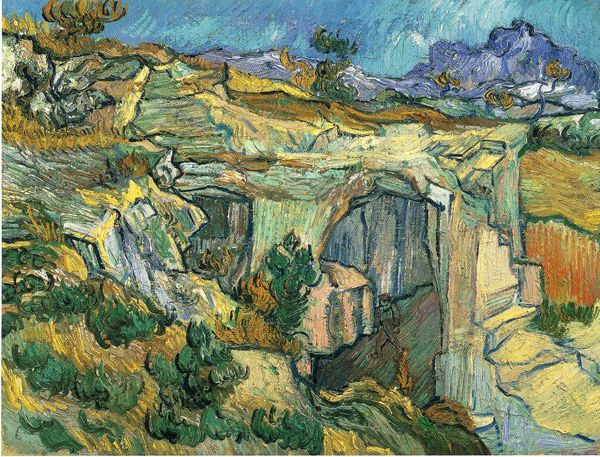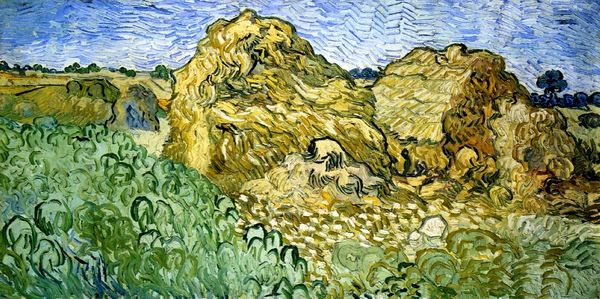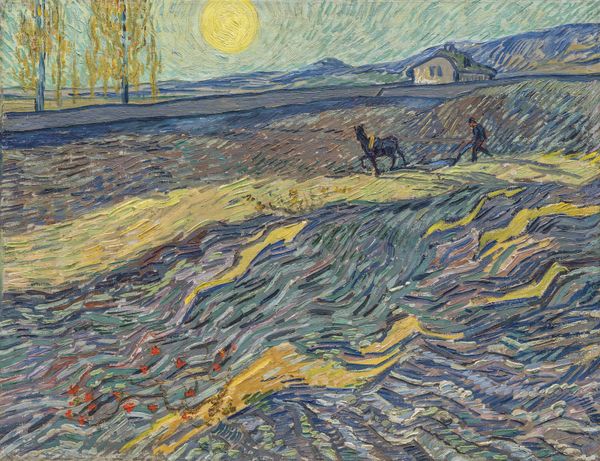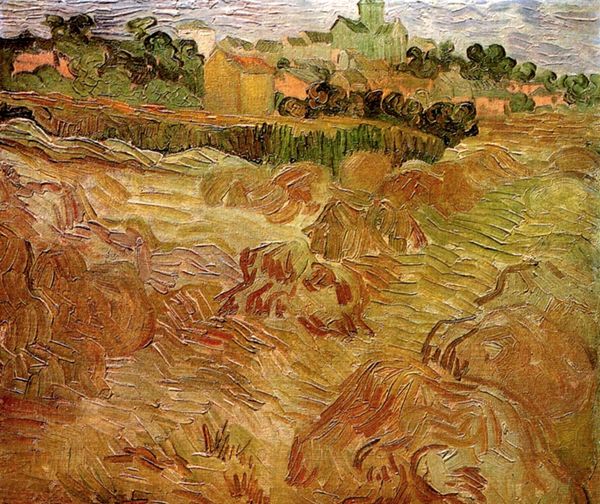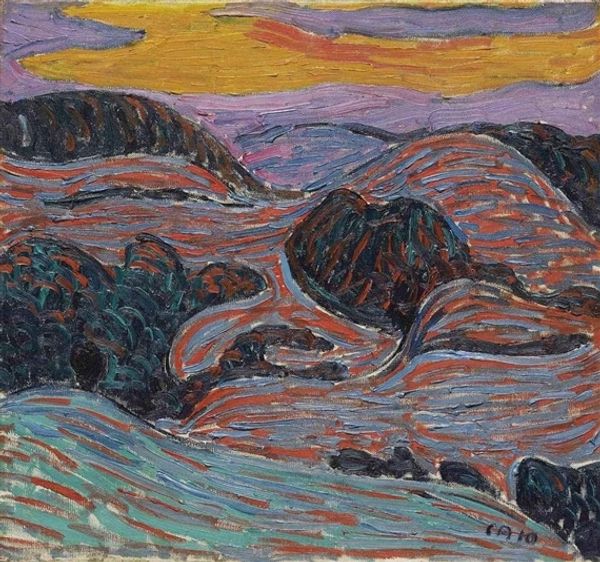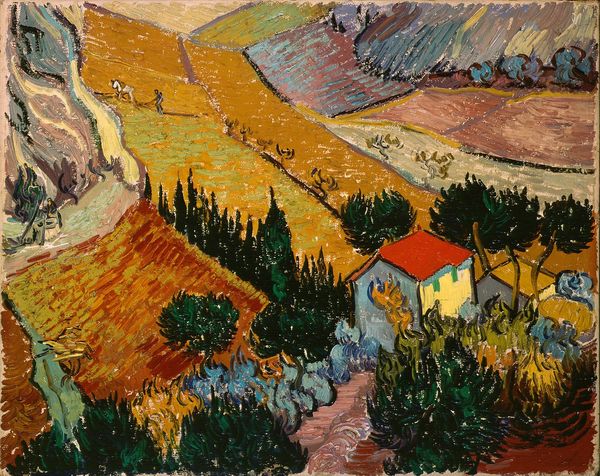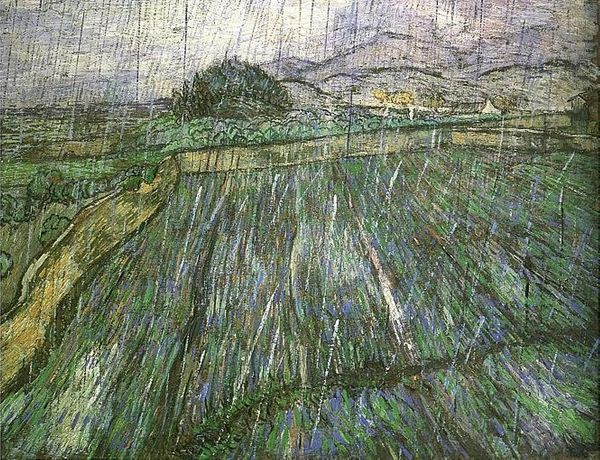
painting, plein-air, oil-paint, impasto
#
painting
#
plein-air
#
oil-paint
#
landscape
#
impressionist landscape
#
impasto
#
symbolism
#
post-impressionism
Copyright: Public Domain: Artvee
Editor: We're looking at Vincent van Gogh's "Landscape at Saint-Rémy" from 1889, an oil painting done en plein-air. It’s full of texture with a foreground figure that feels dwarfed by the scene. How do you interpret this work, and what stands out to you? Curator: The figure is bent over under their burden. This recalls traditional Christian iconography: consider images of the Flight to Egypt. Yet, the fields surrounding that figure churn like an emotional sea – almost as though that weight represents all human toil, the never-ending process of harvesting sustenance from an environment at once beautiful and unforgiving. Do you see how the very strokes convey a feeling of instability? Editor: Absolutely! The thick brushstrokes create movement, as though the land itself is alive. But the image still speaks of hope, somehow. Curator: Hope, or perhaps the will to survive. Yellow has long been associated with divinity. What is its affect on your senses and memory here? Think of the wheat sheaves the figure carries. This represents our inherent connection to the cycle of life, of birth, death, and rebirth, so prominent across various cultures. Van Gogh understood his local symbolism deeply. Editor: It is profound to consider the image and its symbols this way. So, beyond just a scene, it represents something ingrained in us through time, this need to produce and continue living. Curator: Precisely! The landscape becomes a mirror reflecting humanity's persistent endeavor. Consider, even now, the land yields itself to us for nourishment and shelter! Editor: This really helps me understand the piece and how symbolism builds a much larger cultural conversation within a work of art. Curator: Indeed, it reminds us how closely linked our modern perspectives are with these traditions of the past. The picture continues to shift with meaning!
Comments
No comments
Be the first to comment and join the conversation on the ultimate creative platform.
